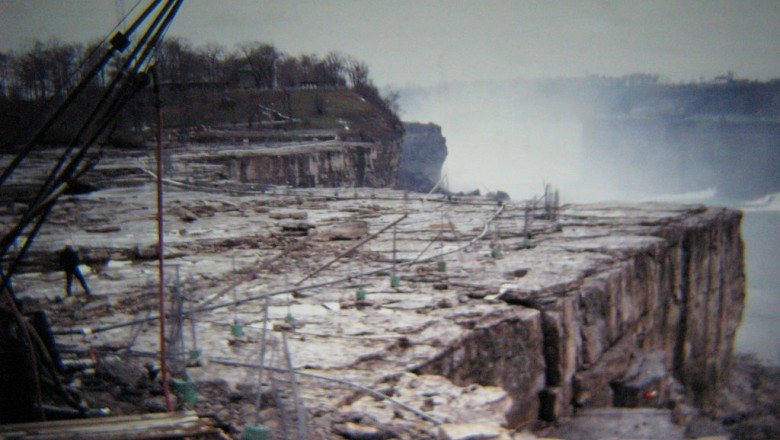
The True Reason Scientists Drained Niagara Falls in 1969
In the summer of 1969, a group of engineers discovered the long-hidden secret of Niagara Falls. When they realized how to stop the flow, they boldly attempted it successfully. They were not afraid of the unknown lying beneath the water - a fear that would have been justified...

One might think it was an impossible task to halt the flow of Niagara Falls, but for these scientists, nothing was impossible. Thus, in 1969, they were on the brink of uncovering hidden treasures. Keep reading to find out what these scientists discovered.
A Natural Masterpiece
Whether you've seen the falls in person or in a video, you were surely amazed by their sheer size. Today, millions of tourists visit Niagara Falls each year and share their photos on social media; Facebook, Instagram, Twitter... Some even write blogs or create vlogs about the waterfalls.
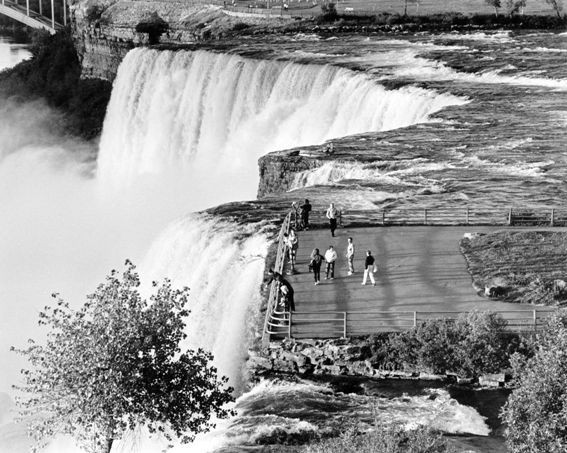
Certainly, words cannot fully describe it, nor can the camera capture the true essence of being there in person, so everyone should visit Niagara Falls at least once in their lifetime. However, five decades ago, when scientists decided to study them, the attraction was not as impressive as it is today.
A Startling Discovery
When the scientists decided to look "behind the scenes" of Niagara Falls, they had no idea what might lie beneath. As soon as they announced their plans, the public took notice. Many people wanted to witness this extraordinary moment in history.

Taming nature is always a challenge, so many wondered if these people could actually handle the task. Did their plans stem from real possibilities or mere wishful thinking? But as the water volume in the falls began to recede, the audience's trust in the scientists started to grow.
A Natural Wonder
In the past - about 18,000 years ago to be exact - Niagara Falls did not exist. They formed as the ice sheets moved away from the North Pole, leaving behind the vast landscape areas we now know as North America. Only when these huge ice blocks melted did the falls come into existence.
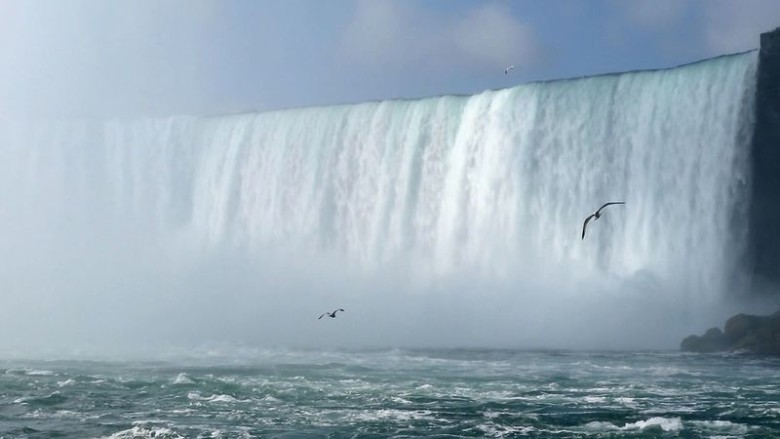
After the glaciers melted, the massive amount of water was directed into the Niagara River. However, the falls did not form immediately. It took a long time for the flowing water to erode the cliffs and shape the waterfalls as we know them today.
A Natural Boundary
Today, Niagara Falls serve as a natural boundary between two similar yet very different countries - Canada and the USA. While over time they have been visited by people from around the world, it is not known when the attraction first drew visitors. Perhaps it was a thousand years ago, maybe even much earlier.
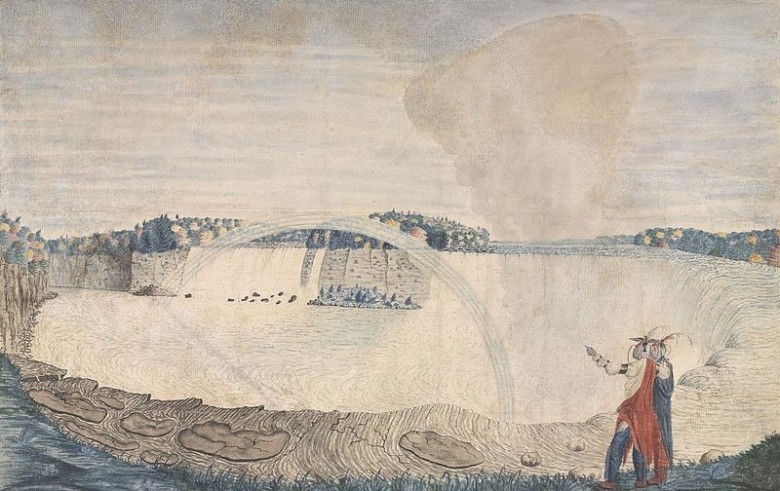
It can only be speculated that locals admired the beauty of Niagara Falls long before the rest of the world. There are no written records of the first visitors or even indigenous admirers. However, it is a fact that many different indigenous communities lived in the surrounding area.
The Europeans
There are written records stating that the first European to learn of Niagara Falls was a French explorer named Samuel de Champlain. This was around the early seventeenth century. However, he was not the first European to undertake the journey to visit the falls.
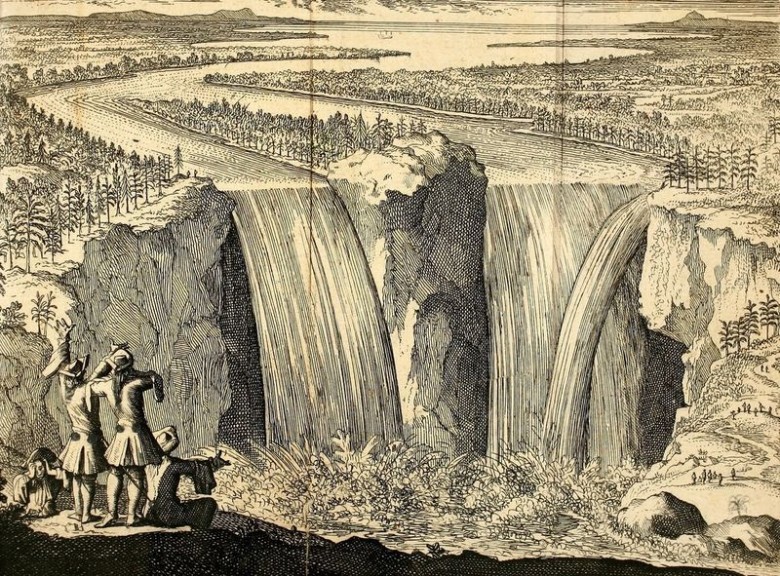
It was not until 1678 that someone from Europe personally visited the falls. This man was Father Louis Hennepin, who traveled to the Niagara Falls in search of New France, as the northern part of North America was then known.
A New Discovery
Five years after his return from the waterfalls, Father Louis Hennepin put his thoughts and impressions on paper. He wrote the article "A New Discovery," which was the first time the name of the falls appeared in writing. Thus, the Niagara Falls as a term were coined in 1683.
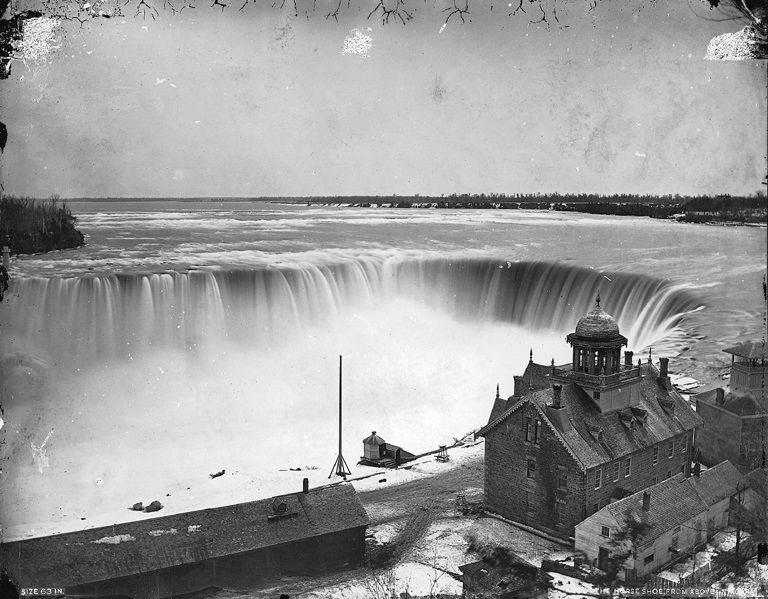
Its name came from the Iroquoian word "onguiaahra," which actually means "the strait." With the publication of his article, Father Louis Hennepin became famous as the first European to see the Niagara Falls. From then on, many visitors from Europe made the long journey to see the beauty they had read about with their own eyes.
A New Tourist Destination
It was not until the 19th century that Niagara Falls became a tourist destination. So, nearly two hundred years after their discovery, the first tourists from Europe came to visit and admire the impressive waterfalls. At that time, the first serious businessmen - especially hoteliers - recognized the commercial potential of the place and began making lucrative investments in the land surrounding the waterfall.
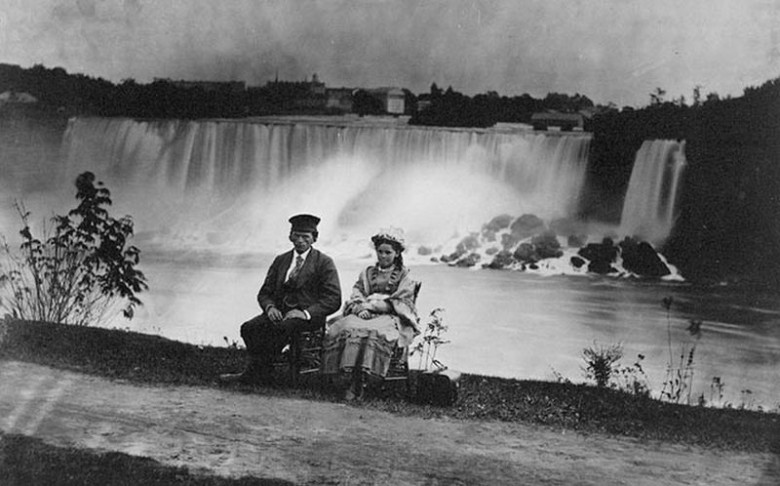
Even in its early years as a tourist destination, Niagara Falls was a tempting spot for honeymoons, and even today, it remains a popular destination for newlyweds. The only difference is that in the 19th century, there were few places to spend money, whereas today there are countless overpriced offerings.
The Rise of Industry
Not only people seeking leisure and relaxation visited Niagara Falls, but also serious industrialists had discovered the promise of this place. They saw enormous potential in the waterfalls. They knew they could harness the energy generated by the falls to power their factories and mills.

By the end of the 19th century, the world's first hydroelectric power plant was built near Niagara Falls. It soon began producing a large amount of electricity that could be utilized.
Nikola Tesla
Although the new hydroelectric power plant was a revolutionary invention, at that time, it was not possible to transport the generated electricity over long distances, only up to a distance of around 91 meters initially. This was inconvenient and urgently needed improvement - but how, no one knew.

The renowned scientist Nikola Tesla had a tremendous impact on the world through his discoveries. What does that mean? Well, he was the first to transport electricity over long distances using alternating current. As an initial experiment, the electricity was sent to Buffalo, approximately 32 kilometers away from the power plant in the US state of New York.
Niagara Falls Still Powering Electricity Today
Although this discovery was made over a hundred years ago, it still operates as effectively as it did in Tesla's time. It is as essential today as it was in centuries past. After all, what electricity is better than that produced from renewable energy sources? Today, these hydroelectric plants at the waterfalls generate more than two million kilowatts of power.
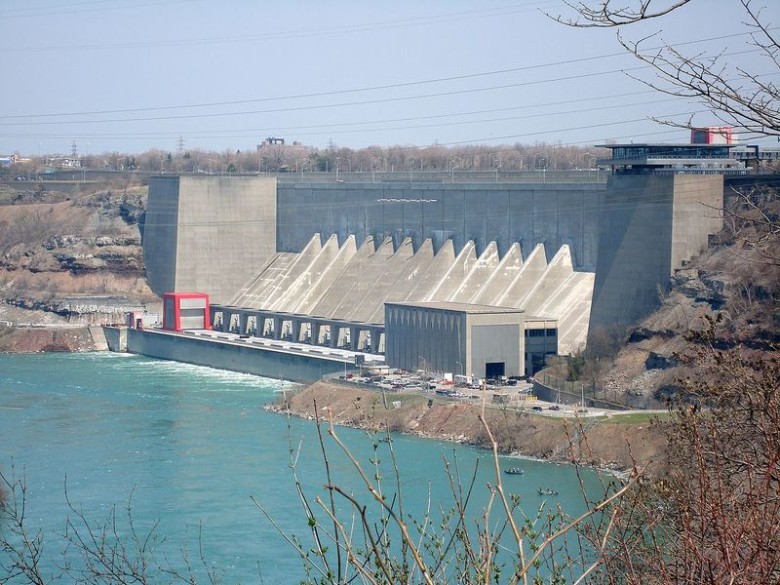
In this century, the use of renewable energies has become even more significant than in previous centuries, as our cities are overcrowded and heavily polluted. Only energy generated from renewable sources like water, wind, and sun can save us from our own destructive nature.
Canada and the USA
As Niagara Falls forms a natural boundary between Canada and the USA, it naturally belongs to both countries. Each year, over 15 million - totaling more than 30 million in total! - tourists from both nations visit the attraction. Essentially, both countries share the benefits that these waterfalls offer.

At the falls, 1.8 million cubic meters of water flow down per minute. Amazing, isn't it? Just imagine the damage such a volume of water could cause if the falls were to flow beyond their borders. Entire cities would be devastated! You are surely familiar with the saying, "Water and fire are dangerous servants but terrible masters."
Changes in Water Volume
Believe it or not, the water volume of Niagara Falls changes during the night. Less water flows over the falls at night. You may wonder how that's possible? Well, humans are involved in this process. It doesn't happen naturally.

In fact, local companies are allowed to draw more water from the falls at night. In the 1950s, a contract was signed allowing local businesses to divert more water at night since few tourists visit the falls at night, and those who do wouldn't notice the difference in darkness.
Niagara Falls in Winter
Ever wondered what happens to the falls during the cold winter months? Can a waterfall freeze when temperatures drop below 0°C? The falls do partly freeze at some points, but the water flow never completely stops. At least not due to low temperatures, that's for sure.
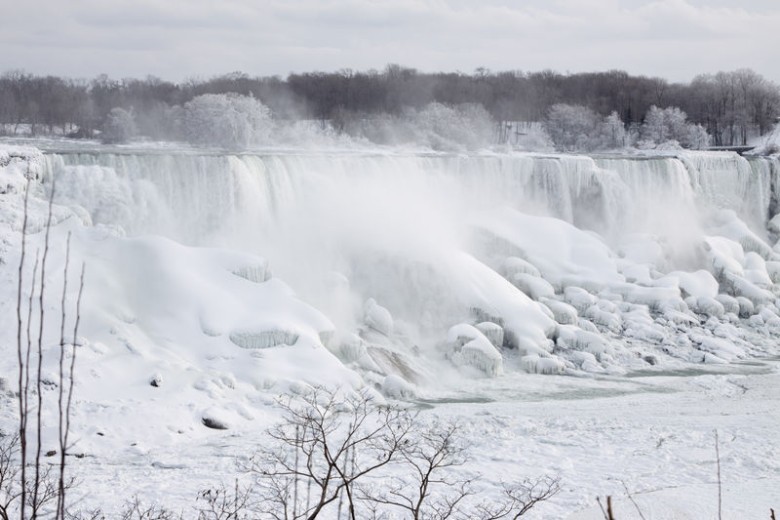
Another phenomenon that occurs in the winter months, as well as other seasons, is that a certain amount of water transforms into steam clouds through vaporization. Have you ever observed when only the upper part of the waterfalls is visible, and the lower part is shrouded behind massive clouds? It's fascinating!
Three Separate Waterfalls
Although Niagara Falls overall belongs to both Canada and the USA, there are some parts that solely lie within the United States of America. The American Falls and the Bridal Veil Falls are exclusively American parts of the Niagara Falls.
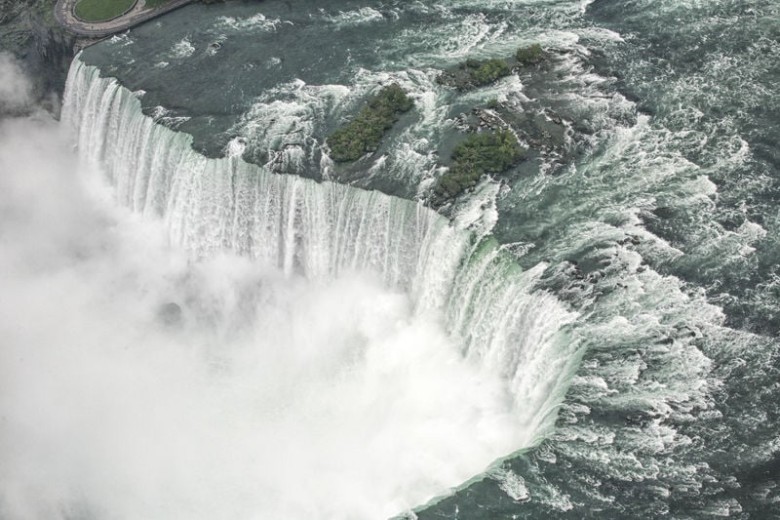
On the other hand, there is no part that belongs solely to the Canadian side. The third and largest part, which serves as the natural boundary between the countries, is called Horseshoe Falls. On which side of the border were you when you visited Niagara Falls?
Concerns of New Yorkers
Only people who regularly visit Niagara Falls can see the changes the waterfall undergoes over time. With every new liter of water flowing down the cliffs, the falls lose a small part of their charm. At least, that's what the citizens of New York, who live near the falls and often visit them, say.
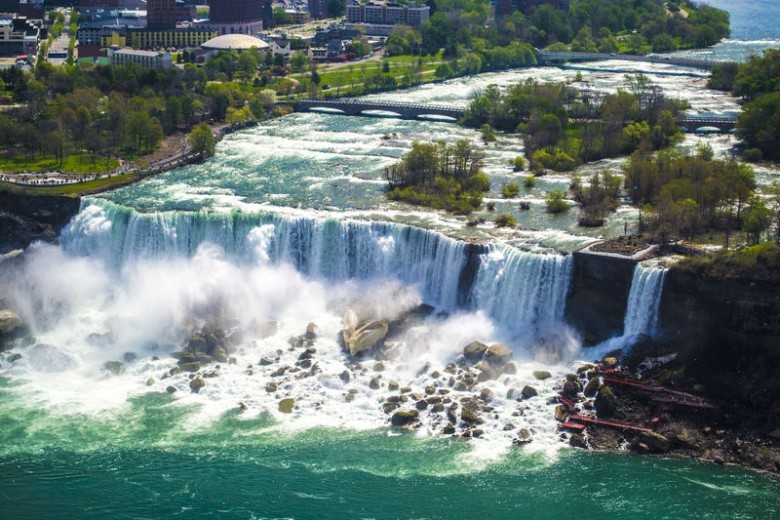
For every new visitor to the site, the falls are amazingly beautiful - whether that visit was a hundred years ago or just a day ago. Nevertheless, it's a fact that over time, stones accumulate at the base of the falls, which could cause problems in the future.
The International Joint Commission
When the concerns of New York citizens living near the falls reached both American and Canadian authorities, an organization responsible for water bodies was contacted. This organization is the "International Joint Commission."

As Americans were concerned about the American Falls, they were the ones who suggested that something must be done about the accumulated rocks at the base of the waterfall. Even the US Army Corps of Engineers were asked for their expert opinion on this matter.
The Operation Begins
As there were no other solutions for the problem of rock accumulation at the base of the waterfall, the engineers decided to completely shut off the water flow. It was only a temporary solution until they could remove all obstructive stones and earth under the water.
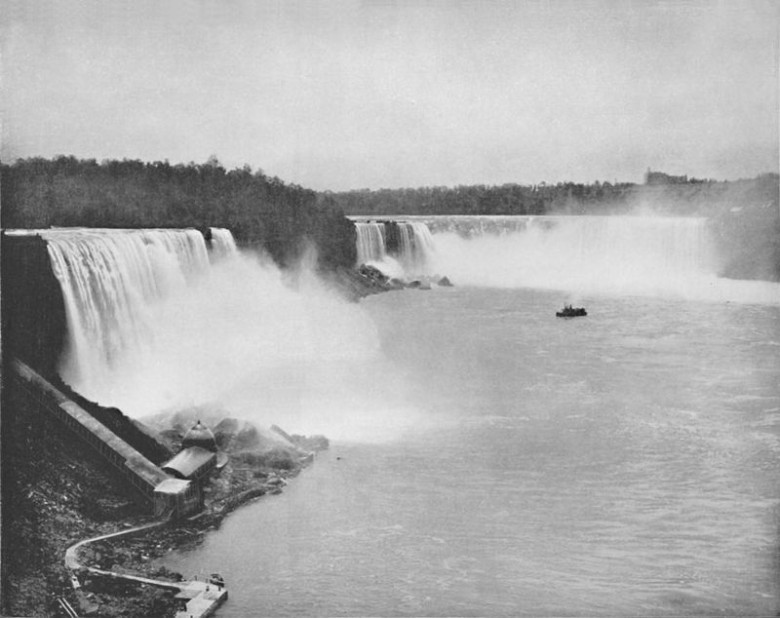
So, in the summer of 1969, more than a thousand trucks delivered rocks and earth to the waterfalls to stop the flow and clear the area under the cliffs. The loads were dumped upstream of the falls for three days. Do you believe they managed to stop the flow of Niagara Falls? Let's find out...
A Cofferdam
As a temporary structure, the engineers constructed a cofferdam at Niagara Falls between the mainland and Goat Island. It was built from 27,000 tons of rock and earth brought by approximately 1,200 trucks. The total length of this structure was 182.88 meters (600 feet).
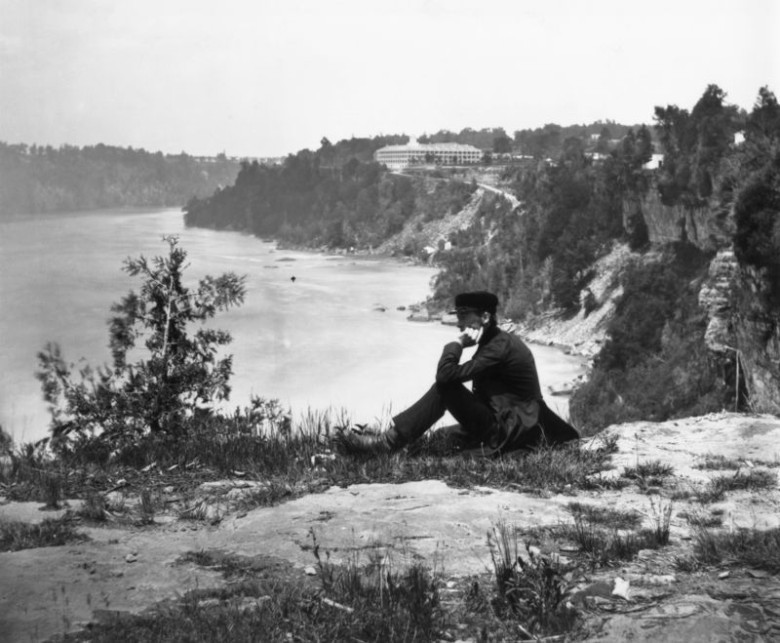
Do you think these loads of rocks and earth prevented the water from flowing to the falls? Did the water perhaps flood Goat Island, the island between the Horseshoe and Bridal Veil Falls? Let's see what happened next...
The American Falls
As you can see in the picture, the engineers successfully stopped the water supply to the American Falls. From there, the water was redirected to the Horseshoe Falls. Thus, the water that would typically cascade down the cliffs of Niagara Falls was silenced for some time.
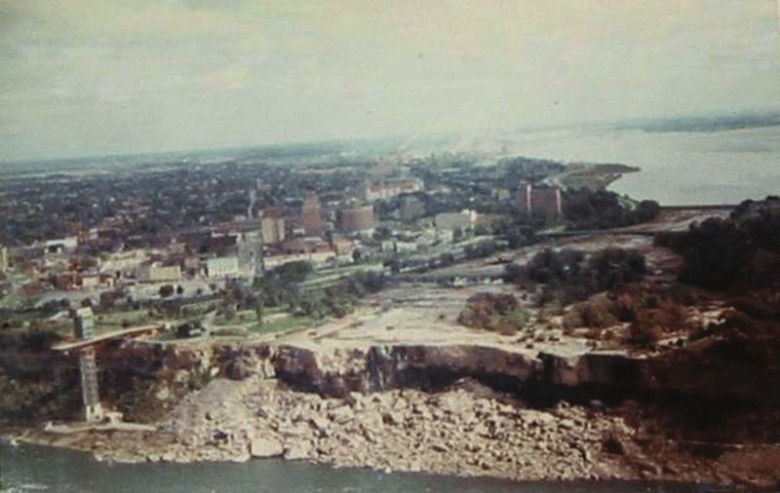
Initially, only the water of the American Falls was halted, as it was not possible to dry all the waterfalls of Niagara Falls simultaneously. We previously noted that there are three distinct waterfalls within Niagara Falls; vast amounts of water that need to flow somewhere...
Local Residents' Fears
The locals had two main concerns regarding this operation. Firstly, they feared the water amount because blocking a river's natural path is always dangerous. So, what if the water did not obey and flooded their land?

The second worry was for the tourists. Locals feared that the lack of water might lead to fewer visitors coming to see the waterfalls. On the other hand, some worried about the opposite scenario; that the unique opportunity to see what lies beneath the waterfalls would attract a number of tourists they couldn't handle.
Decline in Tourist Numbers
Indeed, the drying up of the American Falls resulted in a significant loss of tourists. By the end of the same year, 1969, the number of tourists wanting to view the waterless rocks was considerably lower than in previous years when the waterfalls were in their full glory.

However, those who visited Niagara Falls in the summer months of 1969 had a unique chance to take something from the site back home. Some took rocks, while lucky ones even collected coins from the riverbed.
The Skeletons
During the planning and execution of this massive project, no one imagined finding something as horrifying as skeletons under the waterfalls. Yet, as the water receded, spectators noticed bones beneath the water.
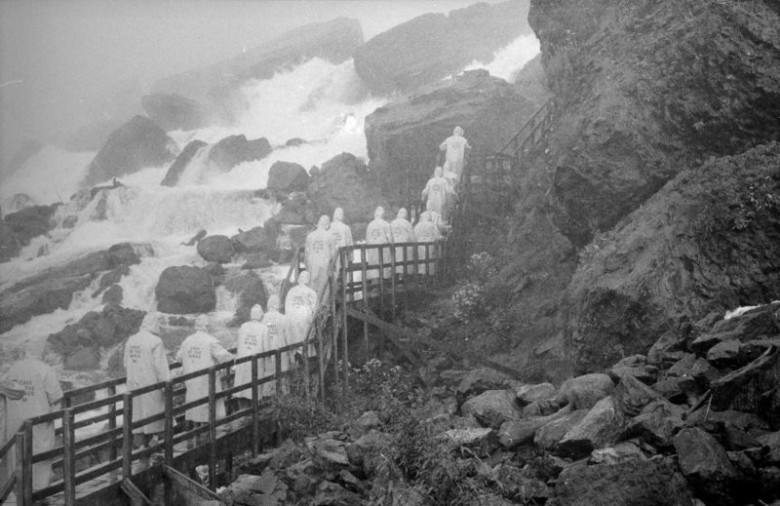
At that time, it wasn't clear if these bones belonged to unfortunate people or perhaps large animals that had drowned in the waters of the Niagara River. One thing is certain - it was better there were fewer tourists at that time because that horrific sight would surely have deterred them from returning to the falls in the future.
A Man and a Woman
The first two skeletons the engineers encountered were those of a man and a woman. Their examination revealed that the man met his end by jumping into the waters of Niagara Falls. The researchers did not specify the year of his death.
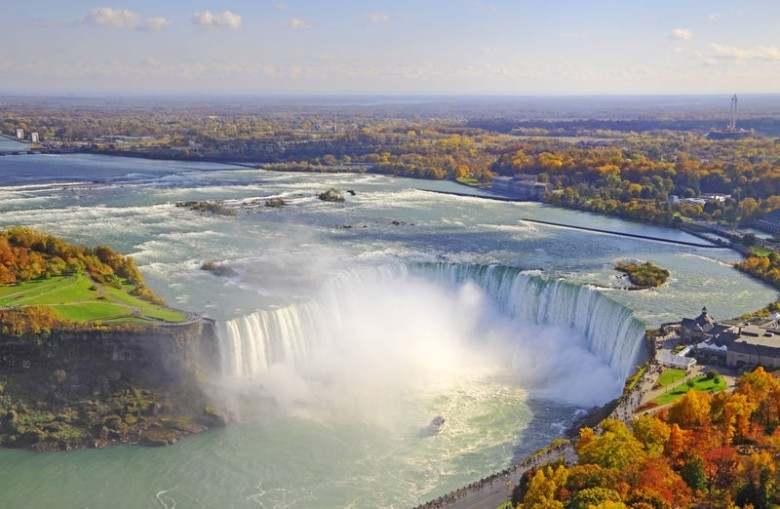
As for the woman's skeleton, apart from her drowning, no other possible causes of death were apparent. It is speculated that the woman witnessed the drowning of her lover and chose to follow him to death by the same path.
Further Deaths
As the water continued to recede, more skeletons surfaced from below. Apparently, Niagara Falls has been a place in the past where people decided to bid farewell to this world. However, this is not a trend of the past. Experts say that even today, around 40 people travel to Niagara Falls each year to commit suicide.
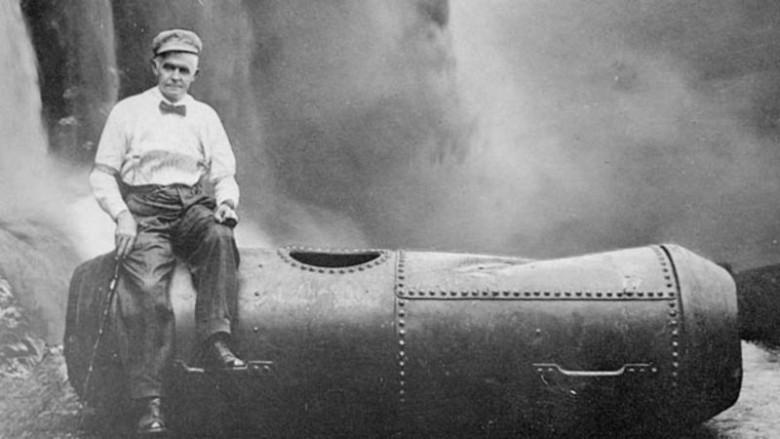
It is understandable why suicide victims have always been drawn to this place - once you jump into the waterfall, nothing can save you. Only a miracle could help you then. No human efforts could overcome the brutal, cold water.
Artists Risk Their Lives
Not only suicide victims have lost their lives in the waters of Niagara Falls. In the past, there were often accidents where people accidentally fell and disappeared. Even some daredevil performers showed up to dare the impossible in their acts, jumping from the cliffs into the water and then swimming to shore.

Of course, this is and was impossible as the water possesses a fierce force that no human can ever overcome. So, if you know someone planning such a stunt, please read them these lines and persuade them to change their minds.
Annie Edson Taylor
Believe it or not, in 1901, a woman named Annie Edson Taylor did something few people would even think about. The 63-year-old teacher decided to connect with her favorite place on Earth in a special way and become famous for it. She got into a large wooden barrel, sealed it, and asked her companions to push the barrel from the shore into the falls.

Yes, she survived, but her experience was so dreadful that she said it was a horrific endeavor, and no one should ever do something so crazy again. However, some people have followed in her footsteps. Some were successful, while others tragically lost their lives in the attempt.
A Permanent Dam
Realizing that removing the rocks was a bad idea, they decided to build a permanent dam instead. However, even this solution wasn't perfect as a dam would weaken the American Falls. Eventually, they abandoned this idea too. So the engineers neither removed the talus nor built a dam, but was the entire operation in vain?
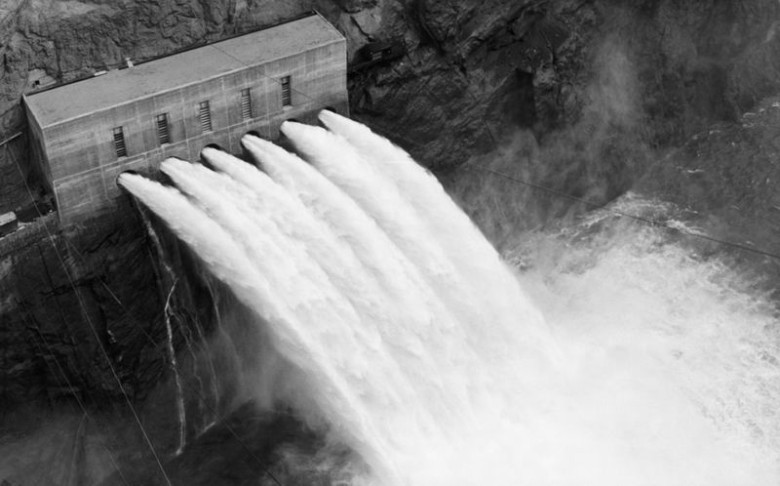
Well, yes and no. They recognized the importance of the rocks beneath the waterfalls and also found the bones of those who perished there, but what should be done about the appearance of the waterfalls now? Was there something else they could do, now that they had kept the falls dry for some time?
Six Months Later
In 1969, Niagara Falls had no water for six months. Well, technically only the American part of the falls, the so-called American Falls. The engineers worked on stabilizing the waterfalls for future generations despite the risk of landslides. Fortunately, no such misfortune occurred.

They had introduced landslide sensors to warn people if the ground began to move. Thankfully, they knew what they were doing - no mistakes were allowed. Numerous bolts, cables, and anchors were installed into the cliffs of the falls.
Protecting Niagara Falls
In November 1969, the cofferdam between Goat Island and the mainland was destroyed by dynamite. Once the dynamite exploded, the massive amount of water rushed along the old route, rejuvenating the American Falls.
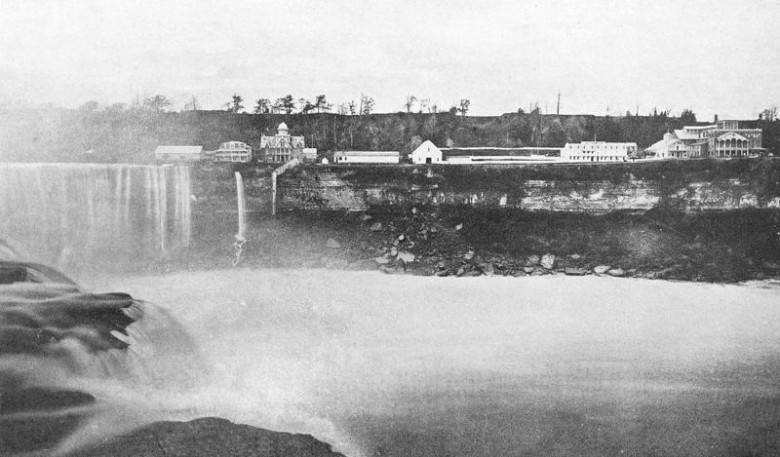
The earlier worries of the citizens from the small town of Niagara Falls were proven unfounded as tourists flocked back. It was good that nothing visibly changed due to the immense work of the engineers. However, the falls turned out to be unexpectedly resilient afterwards.
Industry Has Altered Everything
Although temporarily drying up the falls did not change them in the long run, industrial development had a significant impact on the falls. Generally, this newly developed area of human work influenced the whole world in some way, but nature suffered the most.
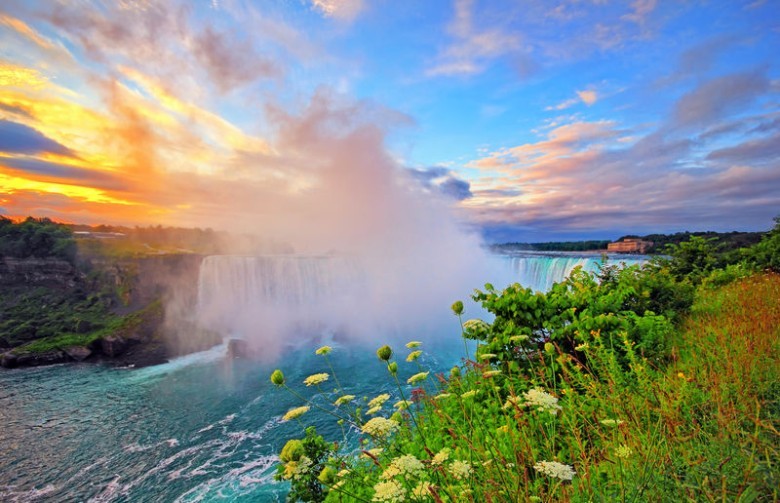
The companies utilizing the power of the waterfalls for their personal purposes nearly altered the course of the river. This occurred in every phase of their development - evidently, industry cannot let nature work without affecting it in some way.
Conservation vs. Industry
As industrial development hindered conservation efforts at the waterfalls, steps had to be taken to regulate these two separate areas so they would not interfere with each other. While scientists only cared about the beauty of the waterfalls, businesspeople were solely focused on energy production.

When nature experts noticed that industrialists were extracting more and more water from the area, they raised concerns. Ultimately, everyone called for a debate to find a solution acceptable to both sides.
The Industry's Perspective
The industrialists believed they were helping the Niagara Falls by limiting the water flowing to the cliffs. They thought that rock erosion would occur slower the less water there was in the falls.
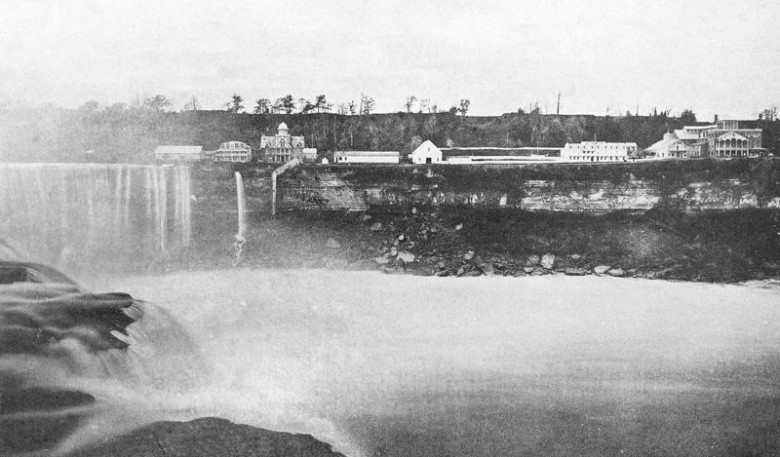
In fact, erosion was happening at a rate of 4.5 feet per year. The industrialists believed that the less water in the falls, the slower the erosion would be. This sounds reasonable, but did it actually happen that way? Do the facts support this belief? Let's see...
The Agreement
Since neither Canadian nor American officials wanted their industries to stagnate, they decided to come to terms with the business people. They accepted their standpoint, but was this the right decision? Were they working towards destroying this natural beauty?
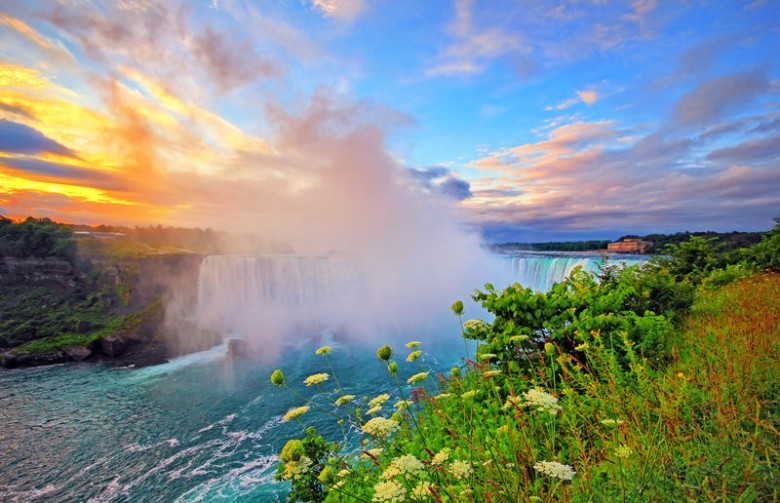
One would only find out in the following years, but since Niagara Falls still exist today and continue to attract millions of tourists annually from all over the world, we can say that they made the right decision back then. The industry has progressed, and the natural beauty has remained intact.
An Innovative Solution
After the two countries cooperated well on this matter of mutual nature's gift, they also agreed on an innovative solution for the industry. Since there were few tourists at night and during the winter months, they agreed that factories could use up to 75% of the water from the falls during these times.
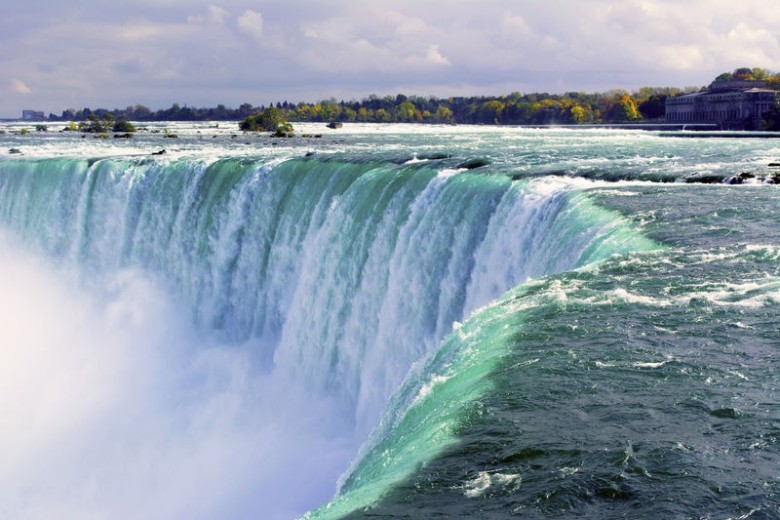
During spring, summer, and fall, industries were allowed to divert up to 50% of the water flow, no more. They also allowed industrialists to alter the lip of the Horseshoe Falls, creating the impressive illusion of a mighty water flow.
And Today?
Well, not much has changed today. Everything they agreed upon in the 19th century is still recognized today, and all tourists who visit the falls more than once can confirm that the falls have remained the same. Who knows, maybe in the future, they will decide to dry up the falls again just to see what lies beneath.
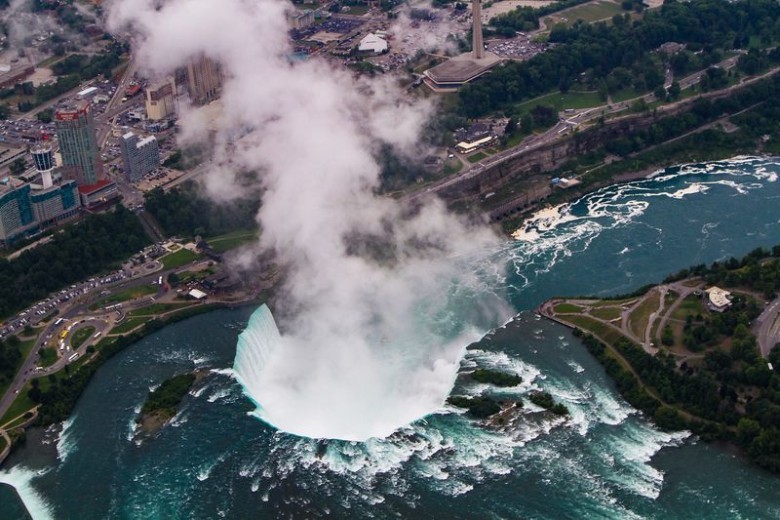
Since this endeavor has already taken place once, we can now predict what lies beneath - more stacked rocks, some coins, and unfortunately many skeletons. It is estimated that around 40 people lose their lives at the Niagara Falls annually.











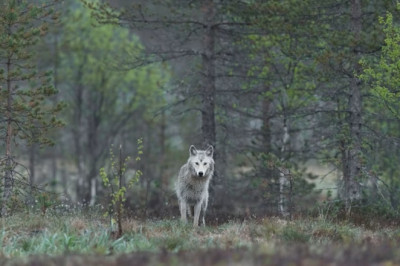

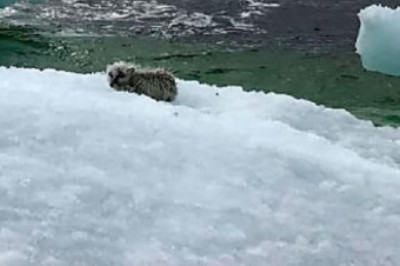






Comments
0 comment